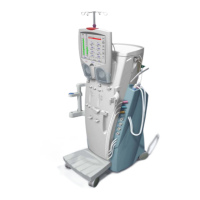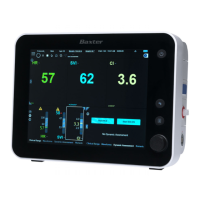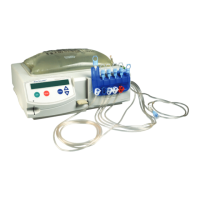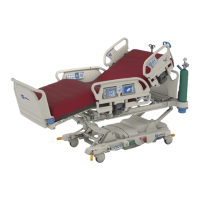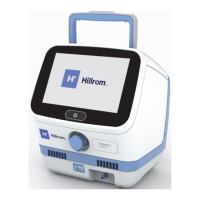Use
54
7990044_030_10 – 2078511 – 2023-01-19
Transport/repositioning:
– Occupational safety for personnel: Given their heavy weight,
take extra care not to strain your back when lifting or carrying
the tabletop sections and accessories, or when manually
adjusting the operating table with or without a patient. Work
with an additional person if necessary. Never couple or
uncouple multiple tabletop sections or heavy, unwieldy
accessories at the same time. Hold the component securely
and do not drop it.
– Risk of personal injury. Incorrect loading can break the tabletop
sections off the operating table or cause the operating table to
tip over. Do not climb onto or down from the operating table
over the back sections or attached tabletop sections. Patients
may only get on or off in the column area via the seat section.
Do not sit on the back section or other attached tabletop
sections.
– Always move the operating table to the level position before
placing a patient on the operating tabletop.
– Position the patient on the operating table securely (e.g., using
straps) and actively support the patient when making
adjustments to the operating table.
– Risk of collision when adjusting the operating table! Carry out
all patient repositioning in a controlled and responsible
manner. Pay close attention to all electrical functions and
movements on the operating table as it moves into the final
position. This is to avoid causing harm to the patient and
damage to the materials on the operating table, equipment or
furnishings. Potential collisions must be prevented by aborting
the function.
Make sure that no surgical draping, tubing or other objects
come in contact with movable parts and get caught by them.
Pay particular attention to the operating table when lowering,
since the operating tabletop may collide with objects lying
below it, or it may even make contact with the floor if set to an
extreme position. In some circumstances, there is a risk of
crushing for individuals concerned.
– Monitor the patient's position. When moving to the level
position on the operating table, larger patient incline positions
may occur compared to the initial position.
Select the level position function only if there is no possibility of
collisions. Monitor the movement from the level position up to
the end position.
– Risk of physical injury due to the operating table tipping over.
Moving the operating table with a patient positioned on it is
only permitted if specific conditions are met (see Chapter 4.11).
– Danger of collision. Be especially careful when transporting the
operating table. Be careful to avoid collisions with nearby
persons or furniture and to prevent damage to the table.
– For accessories with removable pads, do not carry the
accessories by the pad. The accessory will separate from the
pad and fall onto the floor.
– To ensure safe use of the operating table, Technical Customer
Service must be called immediately if there are leaks in the
running gear hydraulics system (loss of hydraulic fluid).
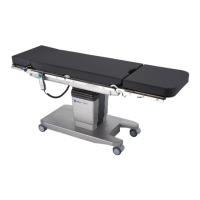
